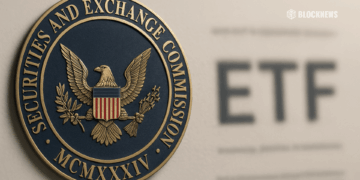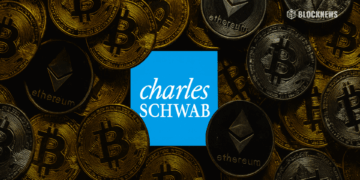- PENGU is leading with retail hype, surging 70% on booming toy sales, social buzz, and ETF speculation.
- ApeCoin is staging a quiet comeback with ApeChain, Banana Bill incentives, and potential developer adoption.
- PENGU brings speed and hype, while APE offers long-term utility and deep brand roots—both are real contenders.
In the wild, ever-shifting world of NFT-linked tokens, two names are dominating the conversation right now—ApeCoin (APE) and PENGU. These aren’t just memecoins. They’re backed by serious branding, real-world recognition, and deeply passionate communities. As 2025’s bull cycle heats up, crypto investors are asking the million-dollar question: which of these ecosystem giants has more gas in the tank?
ApeCoin carries the legacy of the Bored Ape Yacht Club—arguably the most iconic NFT project in Web3. PENGU, on the other hand, comes from Pudgy Penguins—a project once on life support, now reborn into a cultural powerhouse. Both tokens are riding very different narratives, but they’re on a collision course for dominance in the NFT utility race.
A Tale of Two Tokens: What Connects APE and PENGU
On paper, APE and PENGU share a lot of DNA. Both were born from top-tier NFT ecosystems. ApeCoin is the governance and utility token for the Bored Ape universe, covering initiatives like Otherside and now the ApeChain L2. PENGU represents the economic layer of Pudgy Penguins—whose brand has moved from OpenSea sales to Walmart shelves and animated TV deals.
What really unites them is how they blur the line between internet culture and real-world utility. APE holders have a say in ApeDAO, early access to ecosystem tools, and soon, full integration into ApeChain. PENGU is heading in a similar direction with community voting systems in the works and potential ETF exposure.
Both tokens aren’t just speculative assets—they’re becoming cultural currencies in ecosystems that are expanding into gaming, e-commerce, and DeFi. In the current altseason, these aren’t fringe plays—they’re front and center.
PENGU’s Rise: From Meme to Mainstream
PENGU’s story is one of the most compelling comebacks in Web3. After Pudgy Penguins nearly collapsed during the NFT bear market, new leadership under Luca Netz gave the brand a lifeline—and a new vision. Fast forward to now, and Pudgy Penguins has gone full mainstream: toys in big box stores, social media virality, and a growing gaming metaverse called Pudgy World.
This momentum directly fuels PENGU. The token isn’t just vibing off memes—it’s powered by sentiment, physical presence, and expanding use cases. The community is rabid. They believe in the brand, the art, and the mission. And when retail money comes pouring back into the market, tokens like PENGU—ones with clear stories and strong identity—tend to move fast and hard.
With ETF rumors swirling, toy sales booming, and Web3 integrations growing, PENGU is set up to do what most meme coins can’t: actually last.
ApeCoin’s Blueprint for a Comeback
ApeCoin had the spotlight early, but the market eventually moved on. Still, the fundamentals haven’t disappeared. BAYC remains one of the most well-known NFT collections, and Yuga Labs is still building—hard. The new ApeChain is live, powered by Polygon CDK, and offers yield-generating tools for developers and users. Plus, ApeCoin remains integrated into multiple platforms and governance structures.
Despite the FUD and price drops, APE is still widely listed, active, and pushing updates. The recent deployment of ‘Banana Bill’ incentives has brought fresh capital into the ecosystem. More importantly, the token has weathered storms and looks like it might be forming a bottom.
This puts ApeCoin in an interesting spot—out of the limelight but not out of the game. If sentiment flips and ApeChain starts attracting real dev activity, APE could be set up for a major redemption arc.
Market Snapshot: PENGU vs APE
As of now, PENGU is trading near $0.029, with a market cap around $1.9 billion and 24-hour volume at nearly $1.9 billion. That kind of activity puts it at the top of the memecoin/NFT-token tier. Over the last 30 days, PENGU has surged over 70%, driven by ETF buzz and whale buys. Some analysts predict a breakout to $0.045 or higher if volume holds steady.
ApeCoin (APE), meanwhile, is sitting around $0.67, with a market cap close to $530 million and $30 million in daily trading volume. It’s recovered roughly 10% in the past week, showing renewed attention. Forecasts suggest a possible return to the $1.35–$1.50 range by late 2025 if ApeChain adoption ramps up. Though far from its all-time high of nearly $27, the risk-to-reward ratio is turning favorable.
So on paper, PENGU has more momentum and visibility, but APE has a deeper brand, wider utility integrations, and a lower cap—making it an undervalued rebound play.
Which One’s the Better Bet?
It really comes down to what kind of investor you are.
If you’re betting on retail frenzy, pop culture virality, and pure narrative heat—PENGU checks every box. It’s fast, flashy, and already in motion. But that also makes it volatile, with heavy dependence on sustained hype.
If you’re looking for an undervalued asset with long-term brand strength, ongoing development, and a shot at serious upside if the ecosystem expands—ApeCoin might be your better shot. The growth could be slower, but the risk is also more measured.
The truth? Both could win this cycle. ApeCoin as the slow-burn comeback. PENGU as the hype-fueled rocket. And if you’re not sure which horse to back… maybe the answer is both.
ApeCoin and PENGU aren’t just NFT ecosystem coins—they’re blueprints for how crypto can bridge Web3 culture with real-world value. In 2025, both are gearing up for massive plays, and whichever gains the edge could define how NFT-backed tokens evolve in this new cycle.
Whether you’re team apes or team penguins, this battle is one worth watching.
And if you want to stay ahead of the curve on all things NFTs, memecoins, and crypto macro plays, keep it locked to JRNY TV. And for up-to-date market analysis and the sharpest insights in the space, check out the latest XRP news, Bitcoin news, and more on BlockNews—your go-to source for daily alpha.














